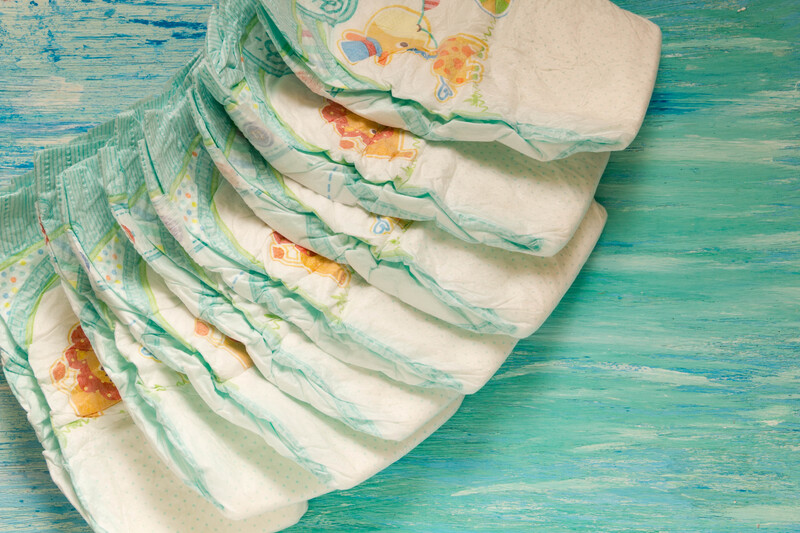How to Choose Packaging Materials that Make Cardboard Disposal Easier
Cardboard is among the most commonly used packaging materials globally. From e-commerce shipments to retail packaging, cardboard boxes dominate the distribution landscape. However, as eco-awareness grows and regulations tighten, making cardboard disposal easier has never been more crucial.
In this comprehensive guide, we explore how to choose packaging materials that make cardboard disposal easier for consumers, businesses, and the environment. You will learn about best practices, innovative alternatives, and actionable tips for eco-friendly packaging. This article will help you streamline cardboard management and minimize waste, all while keeping your brand's reputation and sustainability in mind.
Why is Cardboard Disposal Important?
Cardboard packaging, while recyclable, contributes significantly to global waste if not properly managed. Despite its recyclability, issues often arise due to contamination, improper disposal, or hard-to-recycle packaging combinations.
Choosing the right packaging materials can greatly simplify the process of cardboard disposal for both businesses and consumers. It reduces landfill contributions, supports recycling systems, and aligns with growing regulatory requirements for sustainability.
- Reduces Landfill Waste: Easy-to-dispose packaging keeps valuable corrugated fiberboard out of landfills.
- Boosts Recycling Rates: Well-chosen materials accelerate recycling and manufacturing processes.
- Enhances Brand Perception: Customers appreciate businesses that prioritize eco-conscious packaging.
- Fulfills Compliance: Stay ahead of tightening packaging waste laws and regulations.

Key Factors in Selecting Cardboard Packaging Materials
Selecting the ideal packaging for easier cardboard disposal involves considering several critical factors. Your choices impact the recyclability, separation difficulty, and overall environmental footprint of your packaging solution.
1. Material Purity and Single-Stream Recycling
Packaging composed of a single material, such as 100% cardboard, is much easier to dispose of and recycle than multi-material products. Single-stream recycling systems handle these straightforwardly, without extra sorting or manual separation.
- Avoid: Packaging with excessive plastic coatings or mixed substrates glued together.
- Choose: Corrugated cardboard or solid paperboard without laminates.
This approach significantly speeds up the recycling process and reduces rejection rates at recycling centers.
2. Use of Easily Removable Labels and Tapes
Not all adhesives are created equal. Some tapes and labels, especially those made from plastic or with strong glue, make recycling cardboard more difficult. Instead, opt for:
- Paper-based tapes and labels that are recyclable
- Water-activated tape (gummed tape), which is both secure and compostable
- Minimal use of stickers and adhesives overall
Tip: Include clear disposal instructions for your packaging so consumers know how to peel off or dispose of labels before recycling the box.
3. Packaging Design and Sizing
Optimizing the design and size of your packaging not only saves on shipping costs but also makes disposal and recycling simpler.
- Use right-sized boxes to minimize void fill and extra packaging material
- Prefer folding designs that break down easily without tools or excessive force
- Avoid unnecessary add-ons like plastic handles or windows
The easier it is to collapse or break down the packaging, the more likely consumers are to recycle it properly.
4. Avoid Coatings and Laminates
Glossy finishes, plastic coatings, and waxy laminates--though visually appealing--can be disastrous for the recycling process. Most recycling facilities cannot process coated cardboard effectively, leading to more waste.
- Look for: Natural, uncoated cardboard or paperboard
- If barrier protection is required: Choose biodegradable, compostable, or water-based coatings
Pro Tip: Evaluate your supply chain to see if you can source cardboard material certified as recyclable or compostable.
5. Incorporate Consumer Education
Even the most sustainable packaging is ineffective if your customers don't know how to dispose of it correctly. Clear communication is key:
- Include recycling symbols, guidelines, or QR codes linking to instructional videos
- Provide tips on removing tapes, flattening boxes, or separating components
- Print disposal instructions directly on the packaging for visibility
This approach increases the likelihood of proper cardboard disposal and boosts your brand's reputation for environmental stewardship.
6. Verify Local Recycling Capabilities
Recycling options aren't the same everywhere. Some regions handle certain additives or coatings better than others.
- Research: Local recycling guidelines before choosing your packaging materials
- Test: Your packaging with local recycling facilities for feedback
*Remember:* What's recyclable in one area might be landfill-bound in another. Stay informed and ensure your packaging meets local standards.
Top Packaging Materials That Make Cardboard Disposal Easier
To truly advance sustainable packaging, you need to choose materials that are not only high-performing but also fully compatible with recycling systems. Let's examine the most effective options.
Uncoated Corrugated Cardboard
Uncoated corrugated cardboard is the gold standard for disposal ease. It's accepted in virtually all recycling programs, breaks down quickly, and typically contains recycled content.
- Benefits: Lightweight, strong, widely recyclable
- Drawbacks: Less moisture resistance without coatings
Kraft Paper-Based Packaging
Kraft paper, used as box material, void fill, or outer wrapping, is universally accepted in recycling streams and compostable as well.
- Benefits: Biodegradable, compostable, recyclable
- Drawbacks: Lacks rigidity for some uses
Paper-Based Tapes and Labels
Paper-based or water-activated tapes ensure the integrity of your package while ensuring the box remains recyclable. These tapes break down along with the cardboard during the recycling process.
- Benefits: No need to remove before recycling the box
- Drawbacks: May be more expensive than plastic tapes
Plant-Based or Biodegradable Films
When you must include a liner or film for protection, biodegradable options like PLA (polylactic acid) can offer limited barrier properties while being easier to dispose of responsibly than traditional plastics.
- Benefits: Compostable in industrial facilities
- Drawbacks: Not all curbside programs accept them; verify local options
Innovative Approaches to Reduce Disposal Difficulty
Innovation in packaging design and materials continues to help businesses make cardboard disposal easier for end users. Consider implementing some of these forward-thinking solutions:
Easy-Fold and Tear-Away Designs
Boxes designed to fold flat without tools can encourage consumers to recycle more readily. Some brands use perforation lines for quick breakdown and built-in handles for easy carrying.
Mono-Material Packaging
Using a single material for the entire package (for example, 100% cardboard including dividers and inserts) eliminates confusion and maximizes recyclability.
Returnable and Reusable Packaging
If your business model permits, consider reusable packaging schemes or offer take-back programs for used cardboard boxes.
Common Mistakes to Avoid for Easy Cardboard Disposal
Even well-meaning businesses can fall into common traps that sabotage efficient cardboard disposal. Here are some frequent mistakes to avoid:
- Combining materials: Avoid boxes with plastic windows, metal fasteners, or embedded printouts. They complicate recycling.
- Heavy ink or printing: Excessive printing or glossy ink layers make cardboard harder to process, especially if non-water-based.
- Neglecting instructions: Failing to communicate proper disposal steps reduces recycling participation.
- Poor-quality materials: Low-grade cardboard is more likely to break during transit and end up as unusable waste.

FAQ: Making Cardboard Disposal Simpler
How can I tell if my cardboard packaging is recyclable?
Look for recycling symbols, certifications, or ask your supplier directly. Uncoated, clean cardboard is almost always accepted in recycling programs.
Is all cardboard packaging created equal when it comes to disposal?
No. Uncoated and uncontaminated cardboard is easier to recycle. Boxes with wax coatings, plastic linings, or heavy adhesives require additional processing or are rejected by recycling facilities.
Can I recycle tape and labels?
Paper-based and water-activated tapes are generally recyclable along with cardboard. Plastic-based tapes should be removed whenever possible before disposal.
Conclusion: Make Smart Choices for Easy Cardboard Disposal
By choosing packaging materials that make cardboard disposal easier, you support a cleaner environment, build a positive brand image, and comply with regulatory requirements. Prioritize material purity, minimal coatings, recyclable adhesives, and clear disposal instructions, and you will enable consumers and recycling facilities to do their part.
Use the strategies outlined above to streamline your packaging process and embrace eco-friendly packaging choices. It's simple: when disposal is easy, recycling increases--and so does your contribution to a healthier planet.
Ready to Switch? Next Steps
- Audit your current packaging portfolio for coatings, tape, and adhesives.
- Consult with your supplier about sustainable, easy-to-recycle materials.
- Educate your customers on simple recycling steps via print or digital media.
- Monitor feedback and adjust your materials to maximize both customer satisfaction and recycling rates.
For more on sustainable packaging, recycling best practices, and ways to make cardboard disposal easier, bookmark this resource and check back for updates!



